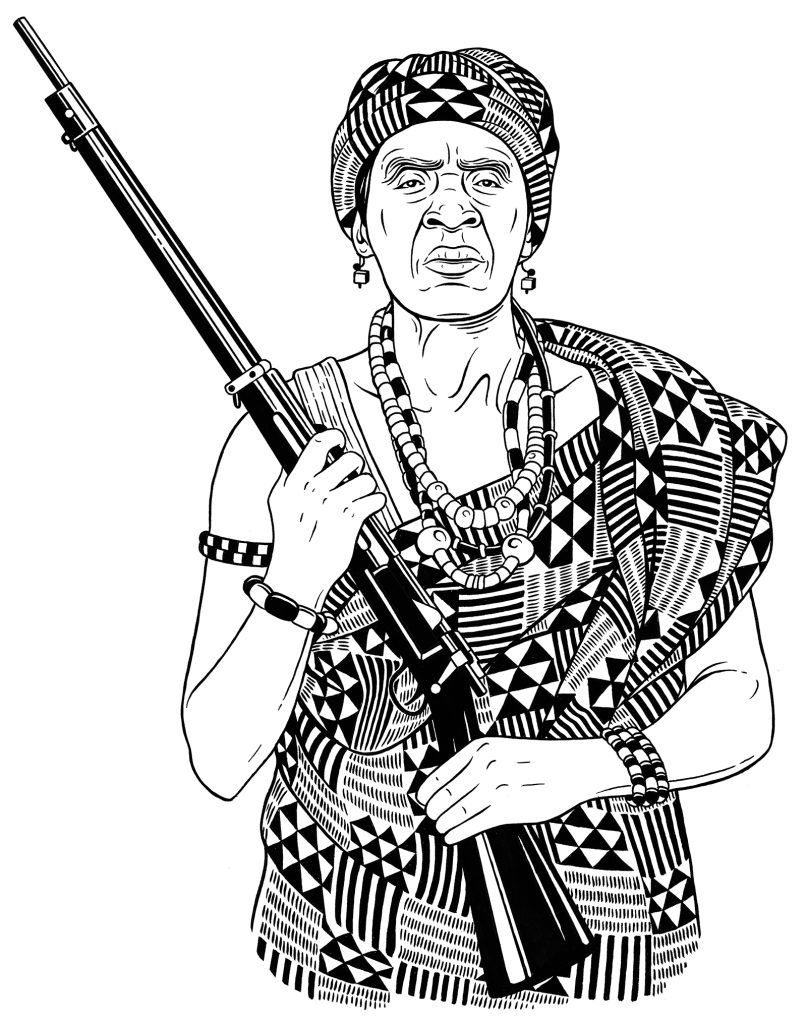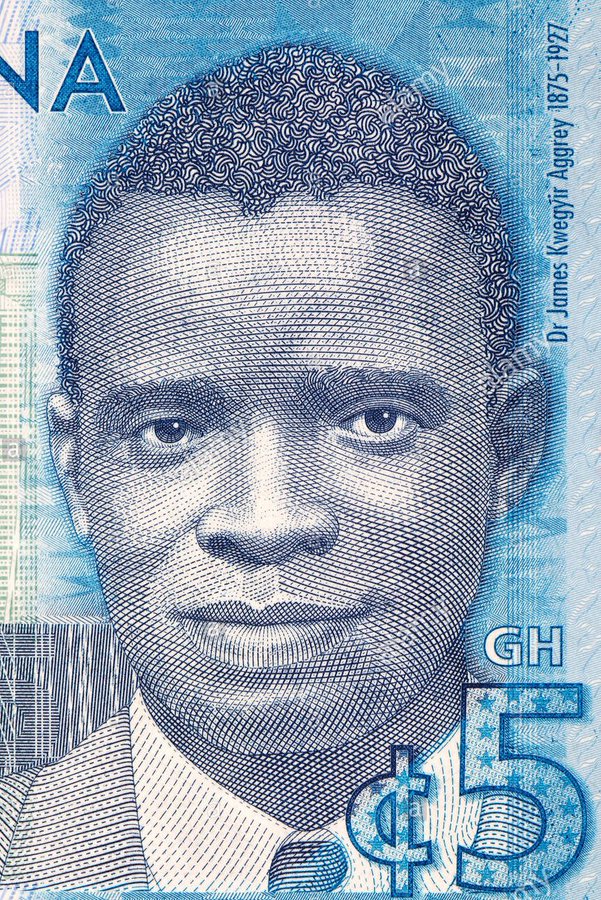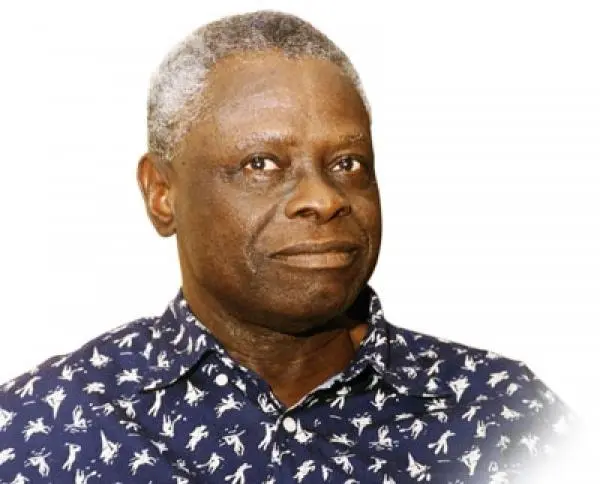Ghana’s Icons: Yaa Asantewaa, Dr. Aggrey, and Okomfo Anokye
Yaa Asantewaa, born on October 17, 1840, in Besease, Ghana, stands as an iconic figure in African history for her courageous leadership during the Ashanti-British War of 1900, famously known as the War of the Golden Stool or Yaa Asantewaa War. Her indomitable spirit and commitment to defending the Ashanti Empire against British colonialism left an enduring legacy.
Early Life and Family:
Yaa Asantewaa, born to Kwaku Ampoma and Ata Po, grew up in southern Ghana, cultivating crops in Boankra after an uneventful childhood. In a polygamous marriage, she became a successful farmer and mother, known for her intellect and political acumen.
Role as Queen Mother:
Yaa Asantewaa’s leadership role became prominent when her brother, Afrane Panin, became the chief of Edweso. After the Ashanti Confederacy faced internal strife from 1883 to 1888, Yaa Asantewaa, upon her brother’s death in 1894, used her position as Queen Mother to nominate her grandson as Ejisuhene. When the British exiled him in 1896, Yaa Asantewaa became the regent of the Ejisu–Juaben district.

The Golden Stool Crisis:
The British governor-general, Frederick Hodgson, demanded the Golden Stool, a symbol of the Asante nation, leading to tensions. In a pivotal meeting, Yaa Asantewaa, addressing the council, uttered her famous words, rallying the Ashanti people against British oppression.
Yaa Asantewaa’s Call to Action:
“Now I have seen that some of you fear to go forward to fight for our King. If it were in the brave days of Osei Tutu, Okomfo Anokye, and Opoku Ware, leaders would not sit down to see their King taken away without firing a shot… We the women will fight the white men. We will fight till the last of us falls in the battlefields.”
The War of the Golden Stool:
Yaa Asantewaa’s call to action led to her appointment as the war leader—the first and only woman to hold this position in Asante history. The conflict, beginning in March 1900, saw the Ashanti forces besiege the British fort in Kumasi. Despite their valiant efforts, a British force of 1,400 eventually quelled the rebellion.
Exile and Legacy:
After months of fighting, Yaa Asantewaa and her advisers were captured, leading to their exile in the Seychelles. She passed away on October 17, 1921. In 1924, Prempeh I and the exiled Asante court returned, ensuring a proper burial for Yaa Asantewaa.

Enduring Impact:
Yaa Asantewaa’s vision for Ashanti independence was realized on March 6, 1957, when the Asante protectorate gained independence as part of Ghana. Her pivotal role in the resistance against British rule makes her a symbol of courage, resilience, and female leadership.
Honors and Recognition:
Yaa Asantewaa’s contributions are commemorated through various institutions, including the Yaa Asantewaa Girls’ Secondary School in Kumasi. A museum dedicated to her was established in Kwaso, and she is immortalized in the Yaa Asantewaa Centre in Maida Vale, London.
Yaa Asantewaa’s legacy extends beyond borders, representing the strength and determination of women in the face of adversity. Her story continues to inspire generations and remains an integral part of Ghana’s rich history.
Dr. James E.K. Aggrey: A Beacon of Education and Inspiration in Ghana
Dr. James Emmanuel Kwegyir Aggrey, an intellectual, missionary, and educator, left an enduring legacy in the realms of education and societal transformation. Born on October 18, 1875, in Anamabu, Gold Coast (modern Ghana), he made significant contributions that reverberate through time.
Early Life and Education:
Born to Kodwo Kwegyir, a confidant of the chief Amonu IV, in Chorkor, young Kwegyir Aggrey was baptized in June 1883 in the Gold Coast, acquiring the Christian name James. His educational journey commenced at Wesley Boys Senior High School, now Mfantsipim School, in Cape Coast. Later, he ascended to become the headmaster of the same institution and the first vice-principal of Achimota College.
Educational Pursuits in the United States:
In 1898, at the age of 23, Kwegyir Aggrey embarked on a transformative journey to the United States for missionary training. Settling in Salisbury, North Carolina, he attended Livingstone College, delving into a diverse array of subjects, showcasing his linguistic prowess in English, French, German, Ancient and Modern Greek, and Latin. In 1902, he graduated with three academic degrees.

Missionary Work and Academic Achievements:
Kwegyir Aggrey’s commitment to education and missionary work led him to join the African Methodist Episcopal Zion Church in Salisbury in 1903. In 1912, he earned a doctorate in theology, followed by a doctorate in osteopathy in 1914. His academic journey continued at Columbia University, where he studied sociology, psychology, and the Japanese language between 1915 and 1917.
Educational Advocacy in Africa:
In 1920, Paul Monroe presented Kwegyir Aggrey with the opportunity to conduct a research expedition in Africa to assess measures for educational improvement. This journey took him to ten different countries, including Sierra Leone, Liberia, Cameroon, Nigeria, and South Africa. His impactful lectures influenced future African leaders like Hastings Kamuzu Banda, Nnamdi Azikiwe, and Kwame Nkrumah.
Legacy and Recognition:
Kwegyir Aggrey’s commitment to co-education and racial harmony resonated in his advocacy. His impactful statement, “The surest way to keep people down is to educate the men and neglect the women,” influenced the decision to make Achimota College co-educational.
Posthumous Honors:
In 1934, Aggrey House in London was established as a hostel for African students, named in his honor. In 2004, the City of Salisbury and the State of North Carolina honored Dr. Aggrey and Mrs. Rose Aggrey with a historical marker at their home. Aggrey’s image graced the 5-cedi bill in Ghana in 2017, a testament to his lasting impact.

Educational Institutions and Quotes:
Several buildings, including the Aggrey Student Union at Livingstone College and the J.E.K. Aggrey Memorial Gymtorium at Landis Elementary School, are named in his honor. His famous quote, “Nothing but the best is good enough for Africa,” reflects his unwavering belief in the transformative power of education.
Dr. James Emmanuel Kwegyir Aggrey’s contributions to education and his vision for a better Africa continue to inspire generations, making him a beacon of hope and progress.
Okomfo Anokye: An Enigmatic Figure in Ghana’s History
Birth and Early Years
Okomfo Anokye, originally named Kwame Fimpon Anokye, was born in the late 1600s in Awukugua-Akwapim, Ghana. His birthplace, Awukugua, holds historical significance, and his upbringing set the stage for a life that would shape the destiny of the Ashanti Empire.
Legend has it that during his birth, Anokye brought with him extraordinary gifts from the gods. Clutching totem poles firmly in his palms, he already held a short white tail of a cow (Podua) in one hand. An incident during his birth became the origin of his name. He clenched his fist so tightly that no one could open it. Upon opening it, he uttered “Ano…Kye” in the Guan language, meaning “Ano…see,” revealing a talisman. This incident bestowed upon him the name “Anokye.”
Contributions to the Ashanti Empire
Anokye’s significance in Ghana’s history lies in his pivotal role in the expansion of the Ashanti Empire. As a traditional priest, he initially hailed from the Volta Region before rising to prominence in the Asante Empire. Teaming up with Osei Tutu I, who assumed leadership around 1690, Anokye became a trusted adviser and chief priest.

Together, Tutu and Anokye executed the expansionist policies of their predecessors, successfully defeating formidable adversaries such as the Akan Doma to the northwest and the Denkyera empire to the south. Their collaboration marked a crucial period in the unification and strengthening of the Ashanti people.
Anokye’s spiritual and political influence played a vital role in transforming the loose Ashanti alliance into a “national” union in 1695. To achieve this unity, he employed not only political strategies but also leveraged the spiritual ties of his priesthood. Rituals and customs were established to diminish the influence of local traditions, with Kumasi designated as the Ashanti capital.
An intriguing aspect of Anokye’s legacy is the placement of a dagger in the middle of the Ashanti region. Despite over 500 years passing, no technology has succeeded in removing it. This symbolizes the resilience and strength of the Ashanti people against external forces.

Legacy and Departure
The War with Denkyira (1699–1701) presented challenges initially, but Anokye’s reputed incantations produced defections among the Denkyira generals when they reached the gates of Kumasi. The Ashanti, under Anokye and Tutu, broke the Denkyira hegemony, marking a significant victory.
After the death of Osei Tutu in 1717, Anokye is said to have returned to Akuapim, where the circumstances of his death remain shrouded in mystery. According to local beliefs, he possessed the key to death, and it was foretold that if anyone cried upon his departure, he would never return. Despite the warnings, the women cried after a few days, and Anokye did not return, leaving behind a lasting legacy in Ghana’s history.
Okomfo Anokye’s life journey and contributions continue to be celebrated, emphasizing his enduring impact on the cultural and historical tapestry of Ghana.
Read More Ghanaian Icons: Kofi Annan, Tetteh Quarshie, and Dr. J. B. Danquah

